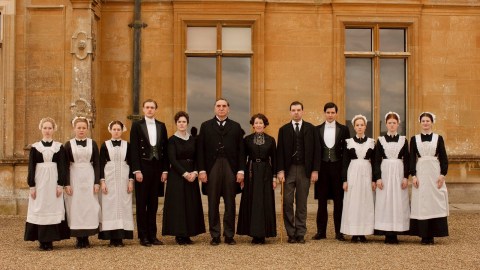Have Marriage and Children Become Luxury Therapeutic Options?

Here’s what two excellent sociologists have concluded about marriage today:
Thanks to falling working-class wages, the outsourcing of American manufacturing, the thinning of company benefits, and the rise of part-time and self-employment, American jobs are, in many ways, less stable than ever. Unskilled workers without a higher education are finding it more difficult to translate blue-collar work into middle-class stability. Many of the working-class Americans interviewed by Silva and Corse are now too concerned with maintaining their “own survival” to “imagine being able to provide materially and emotionally for others.” Meanwhile, marriage itself has transformed into a luxury item. Over the past century, the old model of obligatory American marriage, which was “rooted in male authority” and “backed by both religious and legal mandates,” gave way to “companionate” marriages dedicated to prioritizing “the couple as equal individuals” in the family structure. Now, as Silva and Corse tell it, a new age of “therapeutic” marriage has arisen to focus on the “happiness, equality, mutuality, and self-actualization of individuals.”
That self-actualization doesn’t come cheap. The rise of the freelance economy and the decline of traditional marriage has made life less regimented for middle-class Americans, too. But middle-class people benefit from the educational backgrounds and salaries necessary to stabilize their own careers and relationships outside of these traditional social structures. People like Earl and Jan can spend their paychecks on therapy, horses, college, and gyms to stay happy together. Even middle-class Americans who can’t afford to buy their kid a pony have more resources to maintain their relationships through economic instability. For people at a certain education level and salary potential, the self-employment economy can provide the flexibility to spend time with their families; sharing resources with a partner is more likely to be an investment than a risk. But people like Cindy and Megan can’t afford to invest in this new model (and the old model, where a male breadwinner provided for the family, doesn’t exist anymore). As traditional work and family structures crumble in the United States, middle-class Americans have the money to build relationships, yet remain satisfied as individuals. For working-class Americans, personal stability sometimes requires staying single and avoiding the risk of abuse, abandonment, and even more economic and emotional disruption.
Let me just list some takeaway points, ones that I think are ignored or slighted by both of our political parties. It goes without saying that my interpretation of the solid data is somewhat different than that of the sociologists:
1. The safety nets that have secure stable employment for Americans—particularly ordinary or merely middle-class Americans—are eroding. There’s the withering away of unions, pensions, and employer and employee loyalty, not to mention the rise of part-time, benefit-free employment (such as adjunct professors) and the transformation of career employees into independent contractors. These changes are evidence, if you think about it, of “the victory of global capitalism” or the emergence of a more perfect meritocracy based on productivity ruled by a “cognitive elite.” Republicans note, of course, that these changes also lead to an expansion of welfare-state dependency, because more and more people turn to government for remedies for their insecurity. So capitalism can be winning and the welfare state can be expanding at the same time.
2. That means more and more people who do blue-collar work find it difficult to have the wherewithal to get beyond personal survivalism and think in terms of providing responsibly for a family. So the merely middle-class family is getting more pathological. More homes are broken, more moms are single, fewer with “traditional values” are finding the support of a church home, and so forth.
3. Not only that, America in general is evolving away from an authoritarian and deeply obligatory view of family responsibility toward an ethic of self-actualization. That turns marriage and especially children into therapeutic lifestyle options for those who can afford them. The marriages of the members of our cognitive elite are actually getting more stable. It’s not so tough when both parents are big earners to reconcile both career and child-rearing in relatively stress-free ways. The “self-employment economy” is allowing more and more “cognitive workers” to work some or even exclusively from home—telecommuting and all that.
4. I have to add that these developments are not only causing too many of our children not to be raised well. There actually aren’t enough children. The American birth rate continues to drop. One cause often given is the recession and the pretty jobless recovery that disproportionally effects ordinary Americans who would like to but don’t think they can afford to be parents. But another cause is the therapeutic ethic that limits the number of kids that more affluent Americans choose to have.
5. The birth dearth, of course, is a big reason why government entitlements are in crisis. Too many dependents—beginning with too many old and frail people—are being supported by fewer and fewer productive people. Neither political party, of course, says much about the birth dearth. And certainly no one says it’s both partially caused by and threatens the future of our easygoing ethic of self-actualization.





